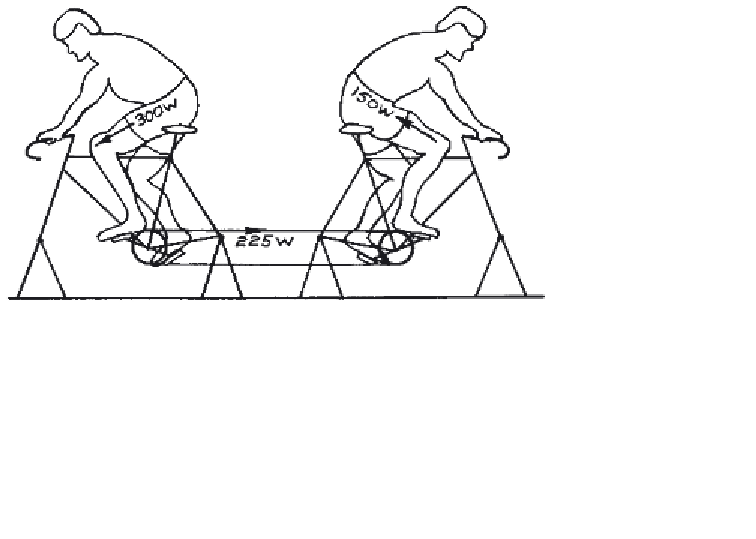Biomedical Engineering Reference
In-Depth Information
work rate on the external load might be 200 W, but the work rate to increase
the energy of the total body by the source muscles of the lower limb might be
400 W. Thus, the sum of the internal and external work rates would be 600
W, and this generation of energy might result from many source muscles, as
shown. Or, during many movement tasks such as walking and running, there
is no external load, and all the energy generation and absorption are required
simply to move the body segments themselves. A distinction is made between
the work done on the body segments (called
internal
work) and the work
done on the load (called
external
work). Thus, lifting weights, pushing a car,
or cycling an ergometer have well-defined external loads. One exception to
external work definition includes lifting one's own body weight to a new
height. Thus, running up a hill involves both internal and external work.
External work can be negative if an external force is exerted on the body and
the body gives way. Thus, in contact sports, external work is regularly done
on players being pushed or tackled. A baseball does work on the catcher as
his hand and arms give way.
In bicycle ergometry, the cyclist does internal work just to move his limbs
through the cycle (freewheeling). Figure 6.3 shows a situation where the
cyclist did both internal and external work. This complex experiment has one
bicycle ergometer connected via the chain to a second bicycle. Thus, one
cyclist can bicycle in the forward direction (positive work), while the other
cycles backward (negative work). The assumption made by the researches
who introduced this novel idea was that each cyclist was doing equal amounts
of work (Abbot et al., 1952). This is not true because the positive-work
Figure 6.3
Bicycle ergometry situation in which one subject (left) cycles in a forward
direction and does work on a second subject who cycles in the reverse direction. The
positive-work cyclist not only does external work on the negative-work cyclist but
also does the internal work to move the limbs of both cyclists. Contrary to common
interpretation, both cyclists are not performing equal magnitudes of mechanical work.










Search WWH ::

Custom Search